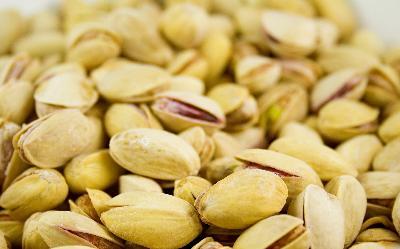
Source: healthyeating.sfgate.com
Doctors often get asked how one can increase the body’s good cholesterol levels. The main aim of this article is to share some tips on how you can increase your good cholesterol levels while lowering your bad cholesterol. Let’s start talking about good cholesterols. They are best known as High Density Lipoproteins or in short – HDLs. HDLs are one of the best scavengers (or transporters) of cholesterol deposits that can reduce the risk of heart attack and stroke. In simplified terms, HDLs round up the bad cholesterols to be broken down in the liver.
The bad cholesterol in your body is known as LDL. They tend to transport and deliver the latter throughout the cells of the body that needs them for growth and repair. Excess cholesterol, however, will circulate and deposit along the linings of the blood vessel walls. Over time, these blood vessels narrow and lead to increased risk of heart attack and stroke.
As discussed above, the goal is naturally to increase one’s HDL and lower the LDL. Here are the following strategies that I would often teach my patients:-
- Stop smoking – studies have revealed a remarkable increase in HDLs by 10% upon cessation of smoking.
- Lose weight – the more pounds or kilos you lose, the higher your HDL creeps up. Though results aren’t significant over the course of your subsequent follow-ups in a year, the cumulative progressive loss of weight over years would yield the extra benefit. Mayo Clinic suggests an increment of 0.03 mmol/L of HDL with each 2.7 kg loss.
- Get moving – start yourself on aerobic exercises. Put on your shoes and start brisk walking or jogging, get a bike and start riding, or attend dance classes.
- Choose your fat wisely – start looking at nutritional labels when you start to purchase cooking oils or margarine to lace your bread. Forgo saturated fats and trans fatty acid, which does nothing but saturate your blood vessels with cholesterol plaques. Opt for good fats – mono and polyunsaturated fats that are present in olive oils and canola oils.
- Red wine – It has been shown that a modest amount of red wine helps to push up HDL levels, albeit a modest amount. A cursory search however reveals conflicting facts that dispel the significance of red wine as a factor in reducing cardiovascular events.
Foods that aid in elevating HDL:
- Nuts – almonds, walnuts, macadamia nuts and pistachios are amongst the best snacks that are healthy to consume as they contain good fats.
- Cranberry juice – Drinking three servings a week has been shown to significantly increase HDL by 10% (which cuts the cardiovascular risk by 40%) and is attributed to its potent antioxidant properties of polyphenols.
- Citrus fruits – Oranges and grapefruit show promising evidence in reducing bad cholesterols when taken in modest amounts. This is attributed to the flavonoid component that possesses cholesterol-reducing properties.
- Bitter chocolates – may not be everyone’s fancy, but believe it or not, those packed with a high amount of cocoa have been shown to elicit an increment of HDL levels in the body, something that isn’t reproduced in other forms of chocolates. The familiar chemical property that plays this particular role in increasing HDL is again that of polyphenols.
- Oats – Taken plain or with a touch of fine cocoa powder daily, you would be amazed at how much your LDL would drop.
- Switch to include more vegetables or plant based oil into your diet – examples such as that of soy proteins, plant sterols and high fibre food has been well known and established as potential cholesterol lowering agents when complemented with other lifestyle modification as advocated above.
- Deep-sea fish such as mackerel, codfish, tuna and salmon possesses high amounts of omega-3 polyunsaturated fatty acids that aid in regulation of fat levels within the blood circulation which aids in protecting one from cardiovascular or cerebrovascular (stroke) events.
Applying these strategies to drive beneficial changes will take time and it will be best done in a stepwise approach. The goal is to accomplish these habit changes over a long period of time and adopting a healthy lifestyle.
Dr. Chiam Keng Hoong is an internal medicine physician and a MRCP holder. He currently works in Sabah.
References:
- American Chemical Society. “Study Provides New Evidence That Cranberry Juice May Help Fight Heart Disease.” ScienceDaily. ScienceDaily, 26 March 2003
- JM Roza et al; Effect of citrus flavonoids and tocotrienols on serum cholesterol levels in hypercholesterolemic subjects; Alternative Therapies in Health and Medicine, Nov/Dec 2007, Vol 13, No.6
- Mursu J et al; Dark chocolate consumption increases HDL cholesterol concentration and chocolate fatty acids may inhibit lipid peroxidation in healthy humans; Free Radic Biol Med. 2004 Nov 1;37(9):1351-9.
- Thongoun P et al; Effect of oat consumption on lipid profiles in hypercholesterolemic adults; J Med Assoc Thai. 2013 Dec;96 Suppl 5:S25-32.
- Oily fish helps heart attack victims to live longer – 07 October 1989; New Scientist. 1989-10-07.
- Arita et al; Stereochemical assignment, anti-inflammatory properties, and receptor for the Omega-3 lipid mediator Resolvin E1; Journal of Experimental Medicine 201 (5):713-22
- Kang et al; Clinical prevention of sudden cardiac death by n-3 polyunsaturated fatty acids and mechanism of prevention of arrhythmias by n-3 fish oils; Circulation 107 (21): 2646-52
[This article belongs to The Malaysian Medical Gazette. Any republication (online or offline) without written permission from The Malaysian Medical Gazette is prohibited.]
